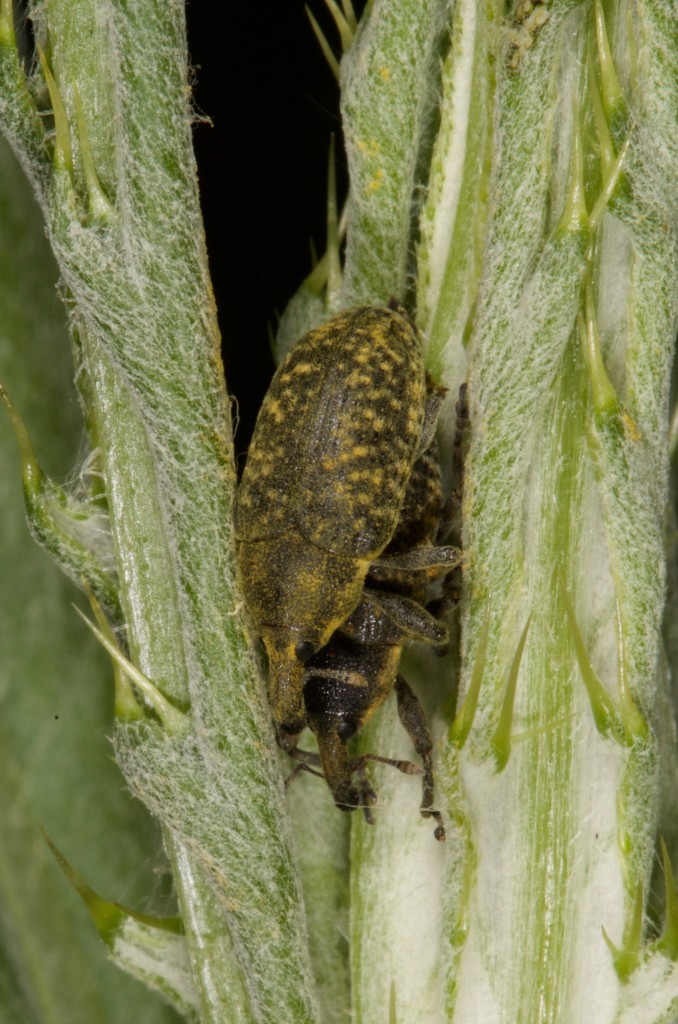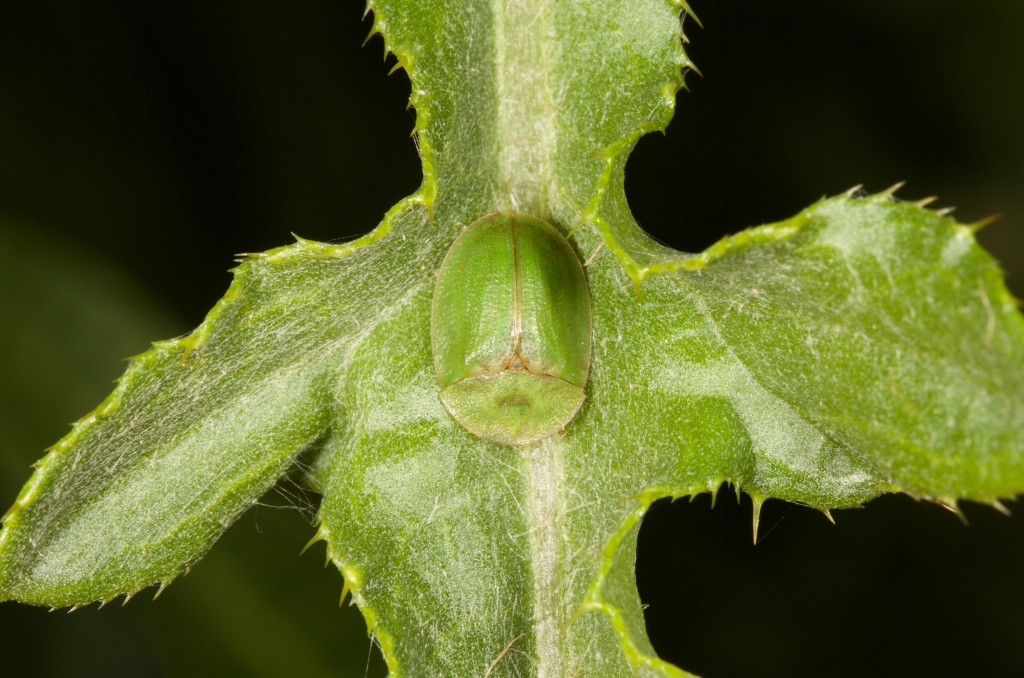As summer approaches, grasses are thriving in lawns across Columbus. Unfortunately, so are some noxious weeds such as Canada thistle, Cirsium ravens (L.), which is listed as a Category 1 weed (meaning it is widespread and well-established). Although it is called Canada thistle, this plant is native to Europe and Northern Asia and was accidentally introduced to North America from Europe in the 1600s. As an invasive species in North America, Canada thistle is considered one one of the most tenacious and economically devastating noxious weeds. It is notorious not only for its irregularly-lobed, spiny leaves, which may hurt pets and humans, but also because it poses a huge ecological threat to many communities. Its creeping root system and abundant feathery seeds enable it to spread and disperse quickly, making it a vigorous and highly competitive species. Once established in an area, Canada thistle wipes out native plants through shading, soil resource deprivation, and possibly the release of toxic alleochemicals. This drastically reduces plant diversity, usually resulting in a monoculture.
Because of its extensive root system and abundant seed production, Canada thistle is very difficult to control by traditional methods such as hand-weeding and herbicide application. Fortunately, several insects such as beetles have been found to damage this plant. For example, Figure 1 shows white spots on the thistle’s leaves, which are indicative of weevil or leaf beetle damage. Here in Columbus, the most common beetle species found feeding on Canada thistle are Larinus planus (Figure 2) and Cassida rubiginosa (Figure 3).
Larinus planus is native to Europe, and was accidentally introduced to the United States in the 1960s. It feeds on Canada thistle seeds and studies have suggested it is an effective biological control agent of the plant.
Cassida rubiginosa is a tortoise beetle that feeds on the leaves of Canada thistle. This beetle is native to Britain, and was accidentally introduced to Canada in the early 1900s. In 1969, C. rubiginosa was intentionally introduced to Virginia to control thistles. Since then, it has become widely distributed across the northern United States.
If you find Canada thistle in your yard, keep an eye out for these important beetles!
References:
*Majka, C.G. and Lesage, L. 2008. Introduced leaf beetles of the Maritime Provinces, 7: Cassida rubiginosa Müller and Cassida flaveola Thunberg (Coleoptera: Chrysomelidae). Zootaxa, 1811: 37-56.
*McClay, A.S. 1990. The potential of Larinus planus (Coleoptera: Curculionidae), an accidentally-introduced insect in North America, for biological control of Cirsium arvense (Compositae). Proceedings of the VIII International Symposium on Biological Control of Weeds, 173-179.
About the Authors: This blog post is a collaboration between two graduate students in Norman Johnson‘s Systematics Lab here at The Ohio State University: Huayan Chen & Katherine Nesheim. Both Huayan and Katherine study tiny parasitic wasps in the family Platygastridae (Hymenoptera), but are interested in all sorts of insects. All photos courtesy of Huayan Chen.




This blog are showing very beautiful picture at Canada.I really like this picture.
Thanks for sharing.